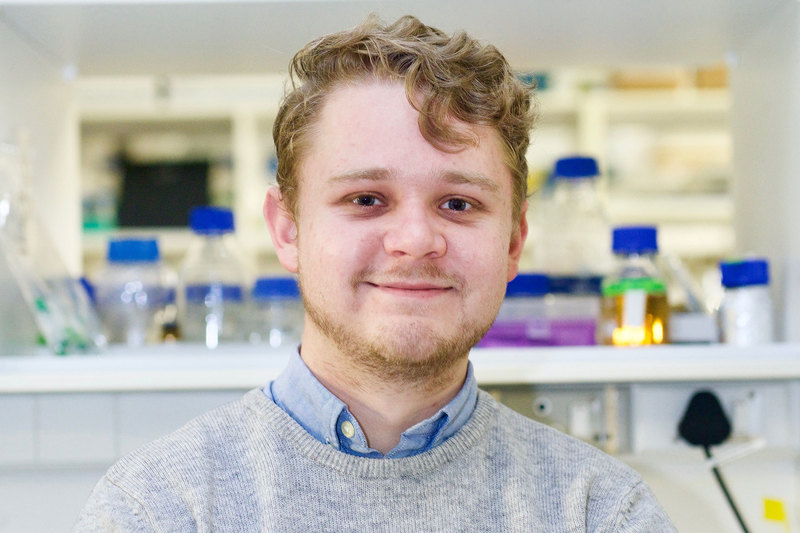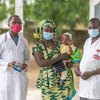Using bacterial shape to understand TB gene function
07 December 2020 | Story Nobhongo Gxolo. Photo Supplied. Read time 5 min.
In order to better understand individual gene function, and to help predict the mechanisms of action of certain tuberculosis (TB) drugs, a team of researchers at the Institute of Infectious Disease and Molecular Medicine (IDM) in the University of Cape Town’s (UCT) Faculty of Health Sciences studied the various factors that can impact the cell shape of Mycobacterium tuberculosis (M. tb), which causes TB. The paper was recently published in eLife.
Survival, and by extension reproduction, is a biological imperative – one made particularly difficult by the hostile environments often encountered by living organisms.
To overcome this challenge, organisms, including bacteria, have developed mechanisms that enable them to adapt to stressors. M. tb, which often evades the human immune system, has evolved over millennia and continues to adapt – particularly to resist the antibiotics medical practitioners use to treat TB.
According to the study, “The M. tb genome carries about 4 000 genes, with several hundred being vital for survival. Finding new ways to fight tuberculosis relies on understanding the exact role of these essential genes, but they are difficult to study in living bacteria.”
The study
The authors of “Arrayed CRISPRi and quantitative imaging describe the morphotypic landscape of essential mycobacterial genes” made use of a related fast-growing bacterium, Mycobacterium smegmatis, as a model for M. tb. They created 270 precisely targeted mutant strains of their model organism with alterations in genes that are essential for growth. They did this with CRISPR-interference, which allows the selective switching off of targeted genes.
The study was conducted to analyse the effects that altering these genes may have on cell shape, like distortions in length or width, or new irregularities. Researchers used a high-resolution microscope that allowed them to capture images of hundreds of thousands of single bacterial cells. The information was then used to build profiles – the paper refers to them as “phenoprints” – of cell shapes that reveal overlapping or closely related gene functions.
“We aimed to combine this imaging dataset with advanced statistical analyses. This guided the development of a deeper understanding of how these genes performed their functions.”
“We aimed to combine this imaging dataset with advanced statistical analyses. This guided the development of a deeper understanding of how these genes performed their functions and helped maintain cell shape,” said Timothy de Wet, the first author.
De Wet is an MBChB/PhD student in the South African Medical Research Council / National Health Laboratory Service / UCT Molecular Mycobacteriology Research Unit (MMRU), which is led by Professor Valerie Mizrahi, the director of the IDM. Advanced scientific training through the UCT clinician-scientist programme, which receives funding from the South African Medical Research Council, helped De Wet to develop the necessary skills to tackle this research.
Altering the expression of the various genes had notable impacts on bacterial cell shape, sometimes in unexpected or previously unreported ways.
“What was particularly interesting was that we could analyse the similarities in cell shape and predict the functions of genes. Moreover, we used the same technique to help predict the target – or at least get hints about the mechanisms of action – of certain TB drugs,” De Wet said.
Award-winning research
Professor Digby Warner, the senior author of the study and De Wet’s PhD supervisor, said that, while South Africa is a world leader in applied infectious disease research, there’s a misconception that advanced molecular and mechanistic studies can’t be conducted locally.
This makes it more impressive that an exclusively UCT-based team (another MMRU PhD student, Kristy Winkler, contributed key results, with honorary professor Musa Mhlanga providing technical insight) was able to perform this work.
“It speaks to the platform that the IDM has established over two decades, and the opportunities offered within the MMRU – we are constantly striving to provide an environment that attracts the best young researchers to understand the molecular basis of a disease that affects millions of South Africans each year.”
In addition to being published in eLife, De Wet’s paper also won first prize in the Original Research category in the Institute Transformation Committee’s annual IDM Postgraduate Student Publication Competition.
 This work is licensed under a Creative Commons Attribution-NoDerivatives 4.0 International License.
This work is licensed under a Creative Commons Attribution-NoDerivatives 4.0 International License.
Please view the republishing articles page for more information.
Faculty of Health Science News
























